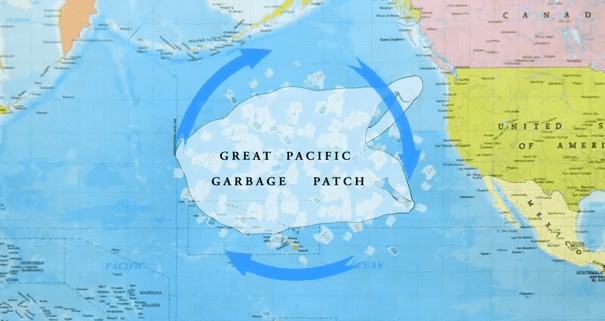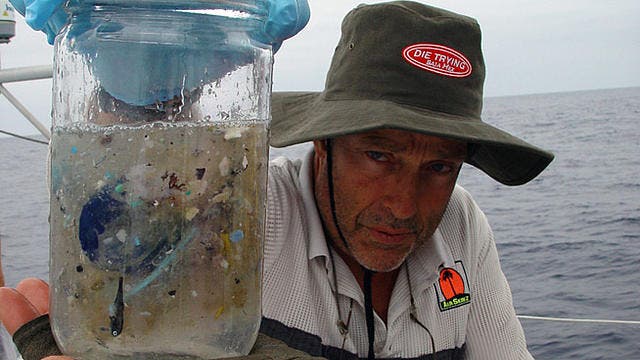In case you didn’t know, there’s a huge garbage patch floating around in the Pacific. New aerial surveys have shown that it’s even larger than we thought.

Approximate size of the garbage patch (the patch is not truly visible with the naked eye). Image via Remarkably.
There’s a lot of garbage floating around the world’s oceans. Much of it is above the surface, some of it is below the surface and another part sinks to the bottom. This isn’t bottles or plastic bags, it’s mostly very small particles not very well defined in a surface. A big chunk of that gets sucked in by oceanic currents and tangles up with other garbage (mostly plastic), developing into huge patches. This isn’t something clearly defined like an island and can be quite hard to study.
The largest such garbage patch is called the Great Pacific Garbage Patch – a simple and descriptive name. The patch is characterized by exceptionally high relative concentrations of pelagic plastics, chemical sludge and other debris trapped by the currents of the North Pacific Gyre. Because the suspended particles are so small and they have such a low density (4 particles per cubic meter), the patch is in a large sense invisible. It’s invisible from satellite imagery, it’s invisible for boats passing by and even for divers.
But when a team from Ocean Cleanup, a foundation part-funded by the Dutch government to rid the oceans of plastics, went to inspect the patch, they found a much higher concentration of plastic particles.
“Normally when you do an aerial survey of dolphins or whales, you make a sighting and record it,” said Boyan Slat, the founder of the Ocean Cleanup.
“That was the plan for this survey. But then we opened the door and we saw the debris everywhere. Every half second you see something. So we had to take snapshots – it was impossible to record everything. It was bizarre to see that much garbage in what should be pristine ocean.”

Captain Charles Moore was the first to notice the Great Pacific Garbage Patch in 1997. Here, he is holding a sample from the patch.
The previously accepted size of the patch was about 1m sq km (386,000 sq miles), with the periphery spanning a further 3.5m sq km (1,351,000 sq miles), according to The Guardian. Of course, that’s an average size, as the shape and surface of the patch is constantly morphing under the influence of the oceanic currents. But the patch is continuously growing – thanks of course, to human activities. In the UK alone, more than 5 million tonnes of plastic are consumed each year, of which an estimated mere 24% makes it into recycling systems. That leaves a remaining 3.8 million tonnes of waste and much of it ends up in the ocean, where it threatens the entire ecosystem. It’s a huge ticking time bomb, and it’s much bigger than we thought.
New reconnaissance flights from California have found that the overall size of the patch, as well as the density of plastic has been “heavily underestimated.” Slat added:
“Most of the debris was large stuff. It’s a ticking time bomb because the big stuff will crumble down to micro plastics over the next few decades if we don’t act.”
A 2014 study found that there are over 5.25 trillion plastic pieces in the ocean, weighing an estimated 269,000 tonnes. The real number, however, may be even much larger than that.









